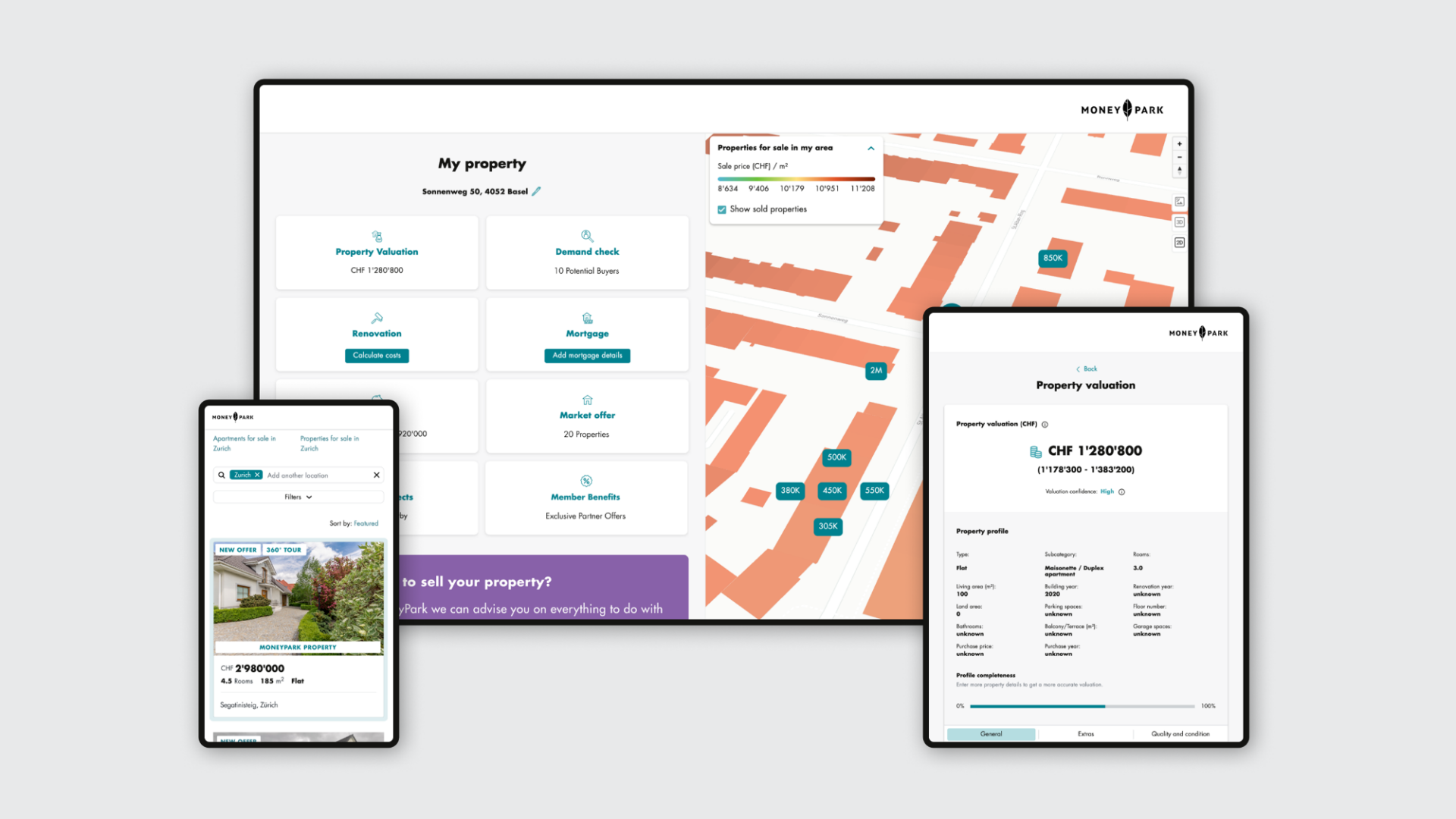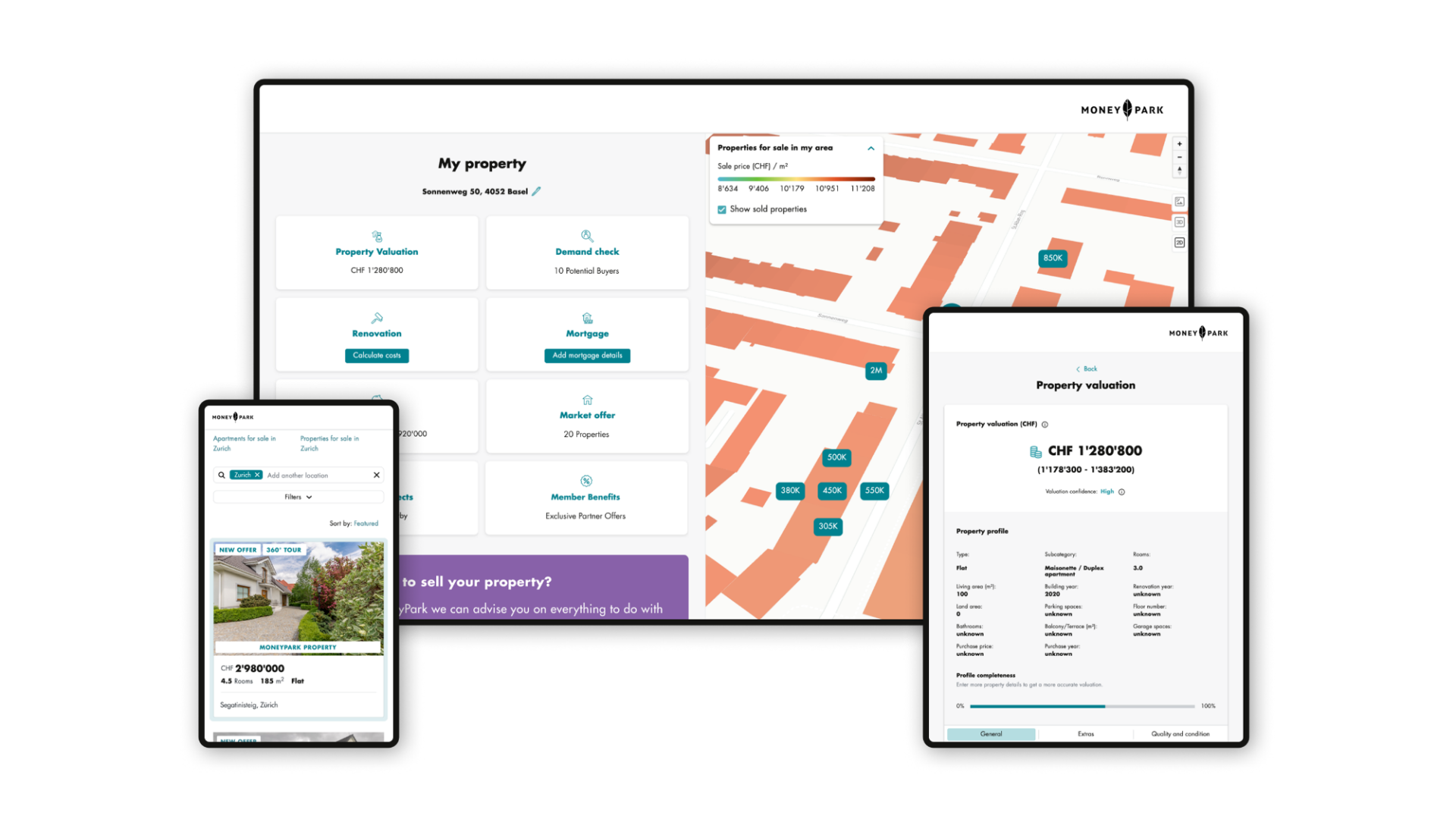-
Search & save
-
Buy & finance
-
Protect your home
-
-
Contact & services

Buy & finance. Brief explanations for frequently asked questions about mortgages.
What is a mortgage?
A mortgage is a loan secured through the lien on a property. Because those who choose to build or buy a home are often only able to provide part of the necessary funds themselves. The shortfall in capital is generally financed through a mortgage.
How does a mortgage work?
A mortgage is a loan secured against the value of a property. Anyone buying a house or apartment in Switzerland must provide 20% of the purchase price as equity. Various types of funds may be used for this purpose, such as cash, savings, an advance on inheritance or assets from the 3rd pillar. This is referred to as ‘hard’ equity. Monies may also be provided from an occupational pension (2nd pillar). Hard equity must, however, cover at least 10% of the market value. The remaining 80% of the purchase price may be financed via external funds – usually in the form of a mortgage. The property serves as security for the mortgage. Being granted a mortgage is tied to various conditions.
What types of mortgages are there?
There are four different mortgage models: fixed mortgage, SARON mortgage (formerly LIBOR mortgage), variable mortgage and forward mortgage. They differ as regards the term and how the interest rate is calculated.
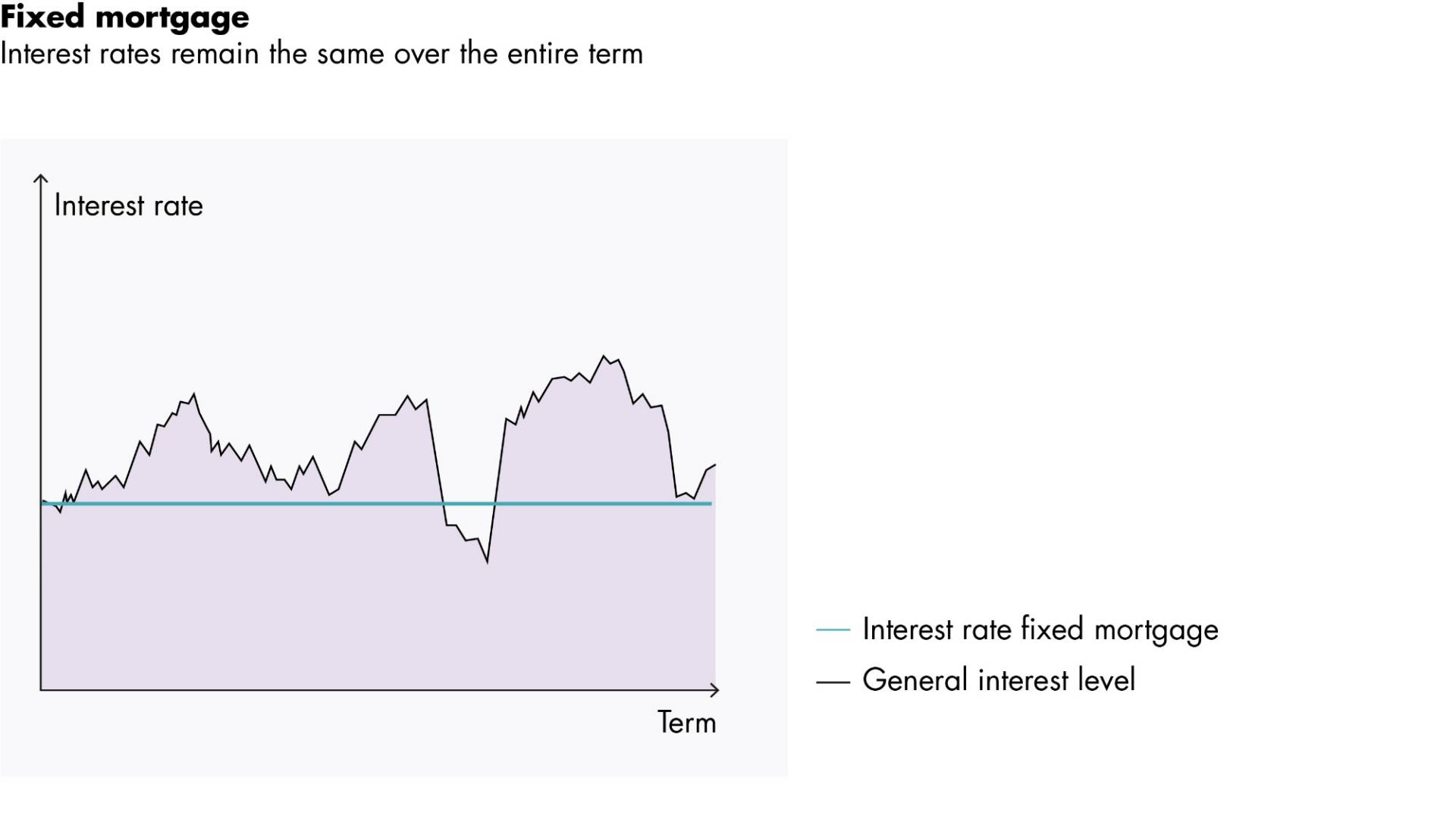
With a fixed mortgage, the mortgagee and mortgage provider agree an interest rate, which remains the same for the entire term of the mortgage. This means that although you do not benefit when interest rates fall, you do not incur any additional costs either when interest rates rise. This provides a lot of reliability in terms of financial planning. Please note: despite there being a fixed term, lenders may still incorporate notice periods into the loan agreement. It makes sense therefore to arrange any repayment/extension in good time (at least 12 months before the relevant date).
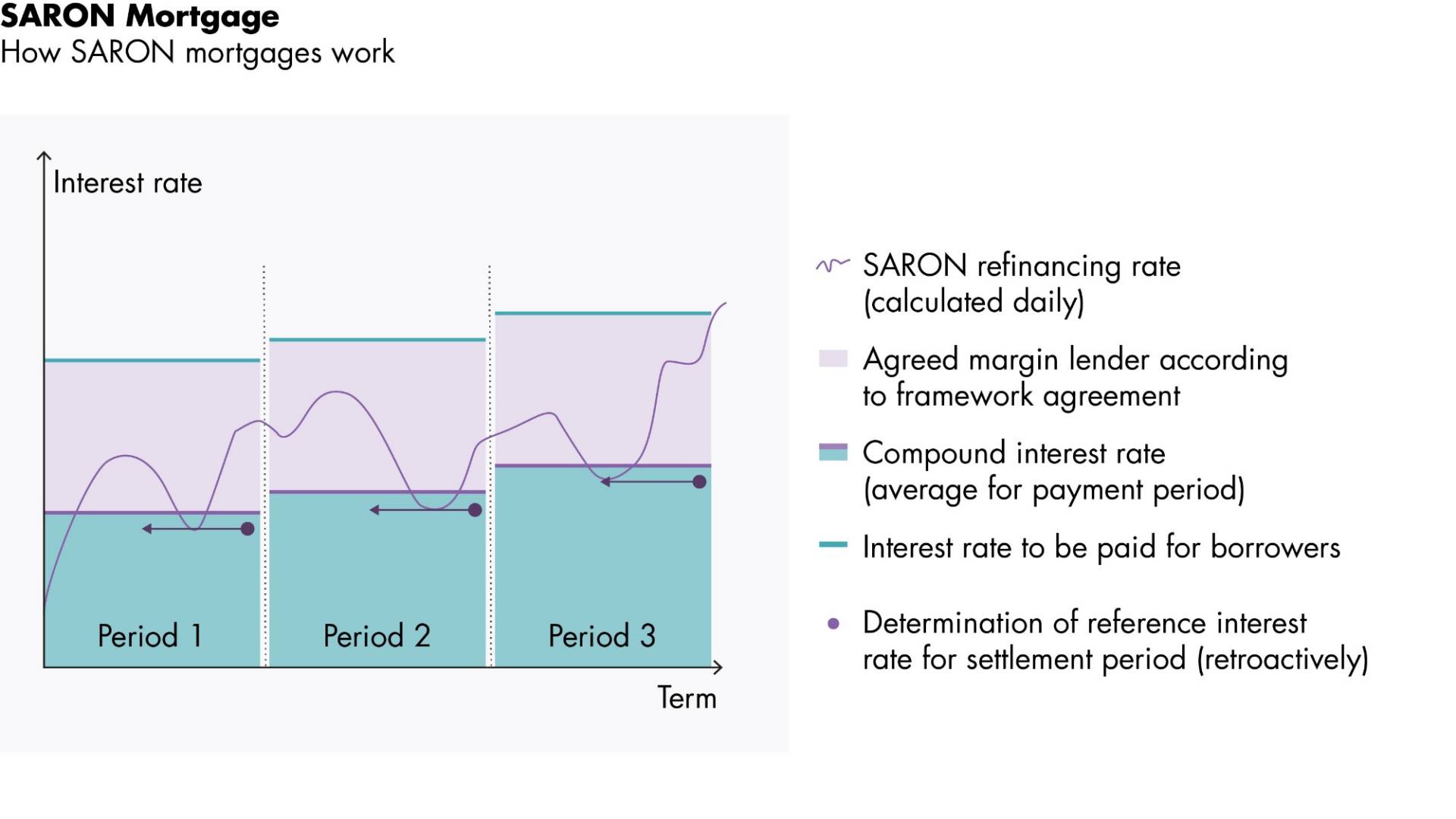
The SARON mortgage is regarded as the successor product to the LIBOR mortgage. It is based on the SARON reference interest rate: this in turn is based on transactions on the Swiss money market and is recalculated each day. Borrowers are no longer able to choose between different refinancing periods (1M, 3M, 6M, 12M) with the SARON mortgage as the refinancing period is only one day. The SARON interest rate consists of the average for the reference interest rate plus the bank’s margin and is calculated retroactively in each case as of when interest is due for payment. Despite a variable interest rate, financial providers generally insist on a framework agreement of 2 to 5 years.
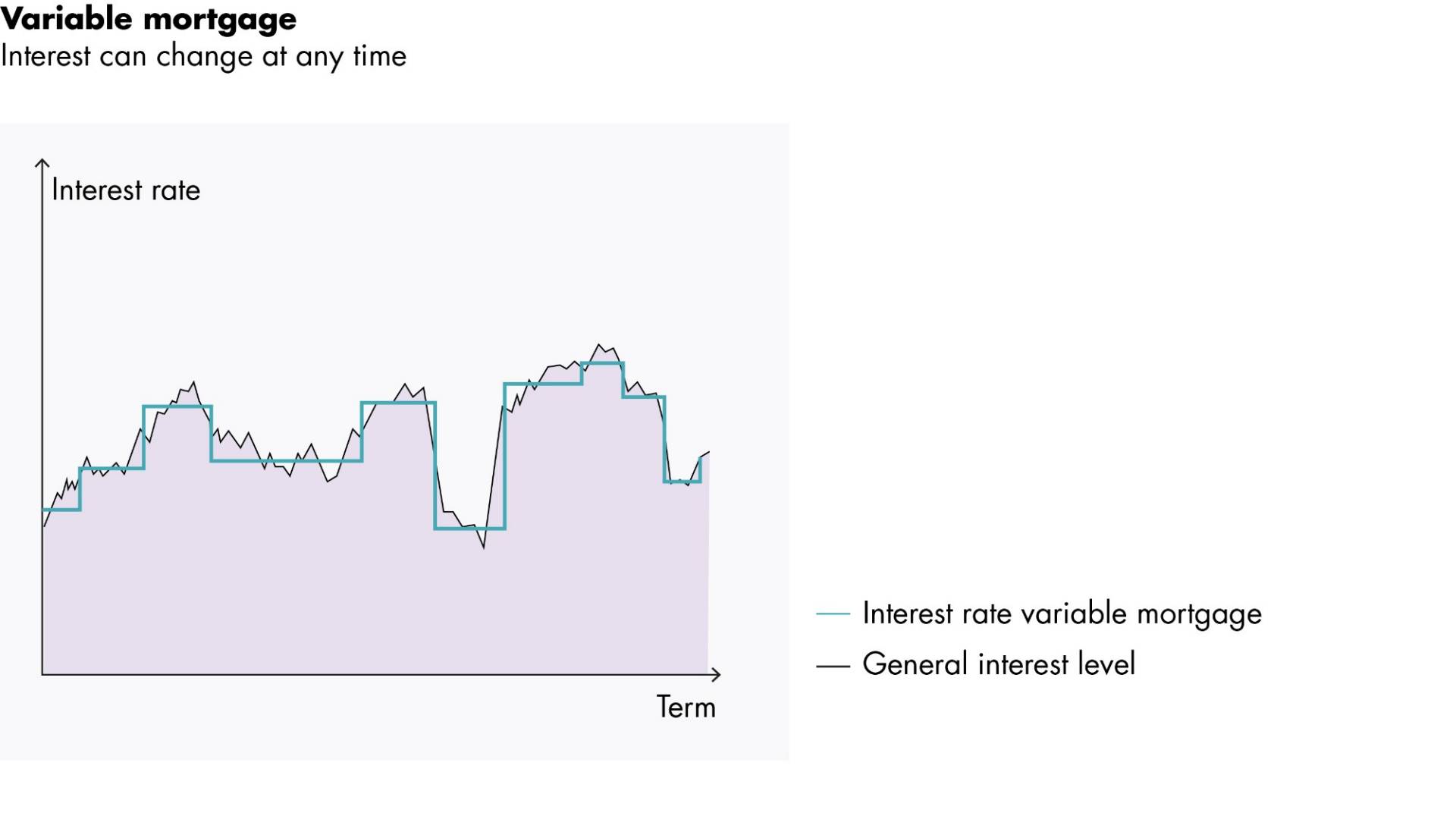
The variable mortgage is the most expensive of the three mortgage types in the current low-interest climate. It is normally used for short-term projects – such as interim financing or smaller renovations. The variable mortgage has no fixed term; it can be cancelled at any time, subject to the notice period. It therefore offers borrowers the greatest flexibility.
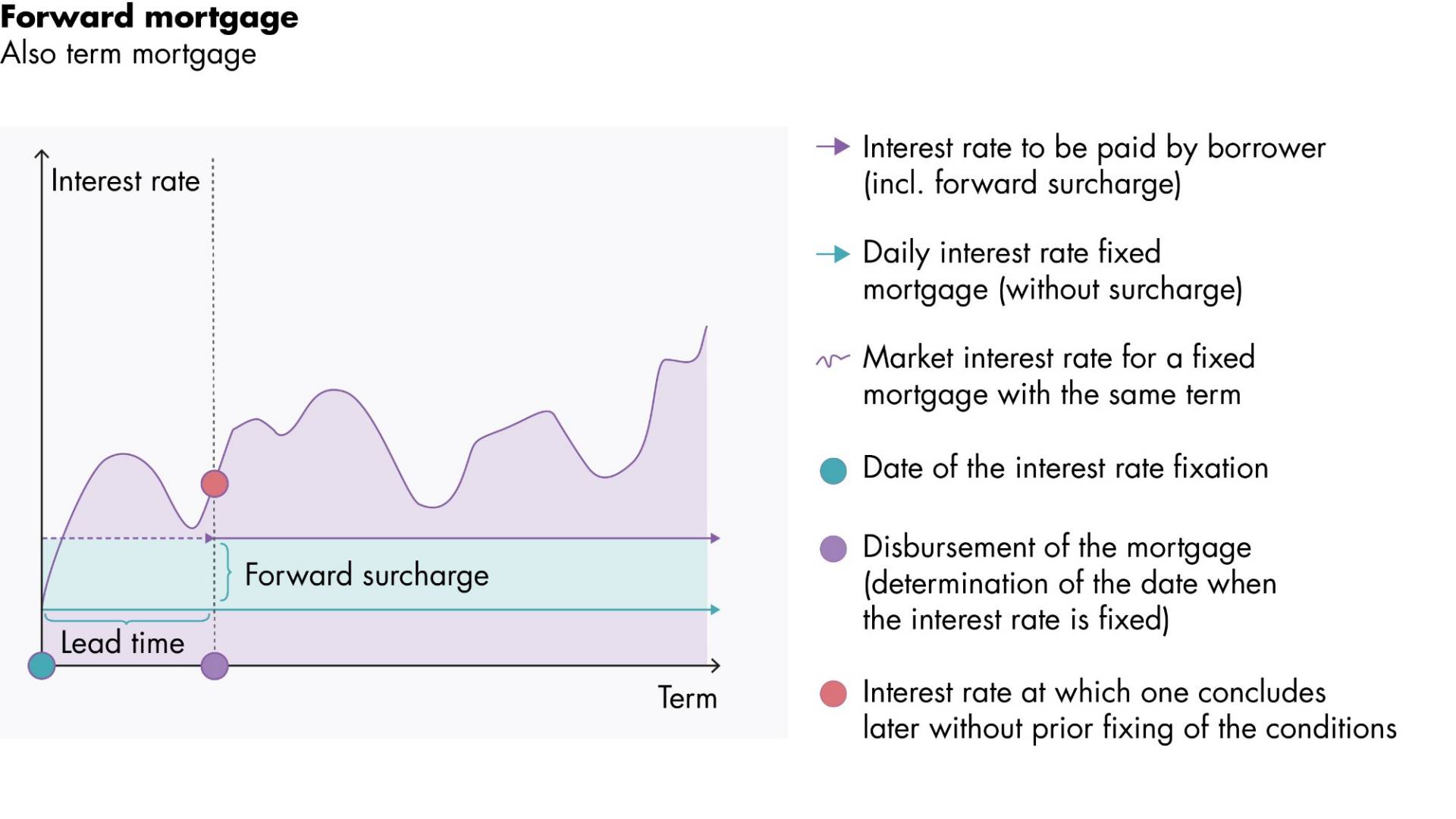
The forward mortgage is a special type of fixed mortgage. A forward mortgage allows you to protect yourself against rising interest rates if the closing date or a mortgage extension are on the horizon. This makes sense if you are expecting interest rates to rise: for a supplement, you fix the current interest rate for your future loan. Depending on the lender, the maximum period between fixing interest rates and the mortgage being paid out is 36 months and is often shorter. Individual providers can also set a specific period for which no supplement is calculated. So it makes sense to compare your options carefully.
What mortgage type is suitable for me?
The same advice applies to mortgages as to a house or apartment: the best option depends on your needs and financial situation. Young families often want financial stability and choose an interest rate that will remain unchanged over a long period. By contrast, those planning to move following retirement will choose a mortgage product with a shorter term. Unlike many banks, certain pension funds and insurance companies also offer mortgages that allow more flexibility in terms of early cancellation, amortisation or early extension (including during the term). The MoneyPark advisors will be pleased to present the appropriate solutions to you.
What do we mean by 1st and 2nd mortgage?
Financial institutions generally grant 80% – in exceptional cases up to 90% – of the purchase or construction costs as a mortgage. They make a distinction between a first or second mortgage: the 1st mortgage amounts to between 65% and 66.6% of the market value. Anything above this value automatically falls under the 2nd mortgage. Why this particular breakdown? The reason is the amortisation obligation: this ensures the growing equity ratio provides borrowers with protection for their old age or against adjustments in value. The 2nd mortgage therefore needs to be repaid within 15 years or when you retire (whatever comes first). This generally happens via direct or indirect amortisation. Once the 2nd mortgage is paid off – and the lending ratio is therefore below 66.6% – there is no further amortisation obligation. A few providers still charge a small interest supplement for the 2nd mortgage due to the increased risk. But this practice is falling out of favour.
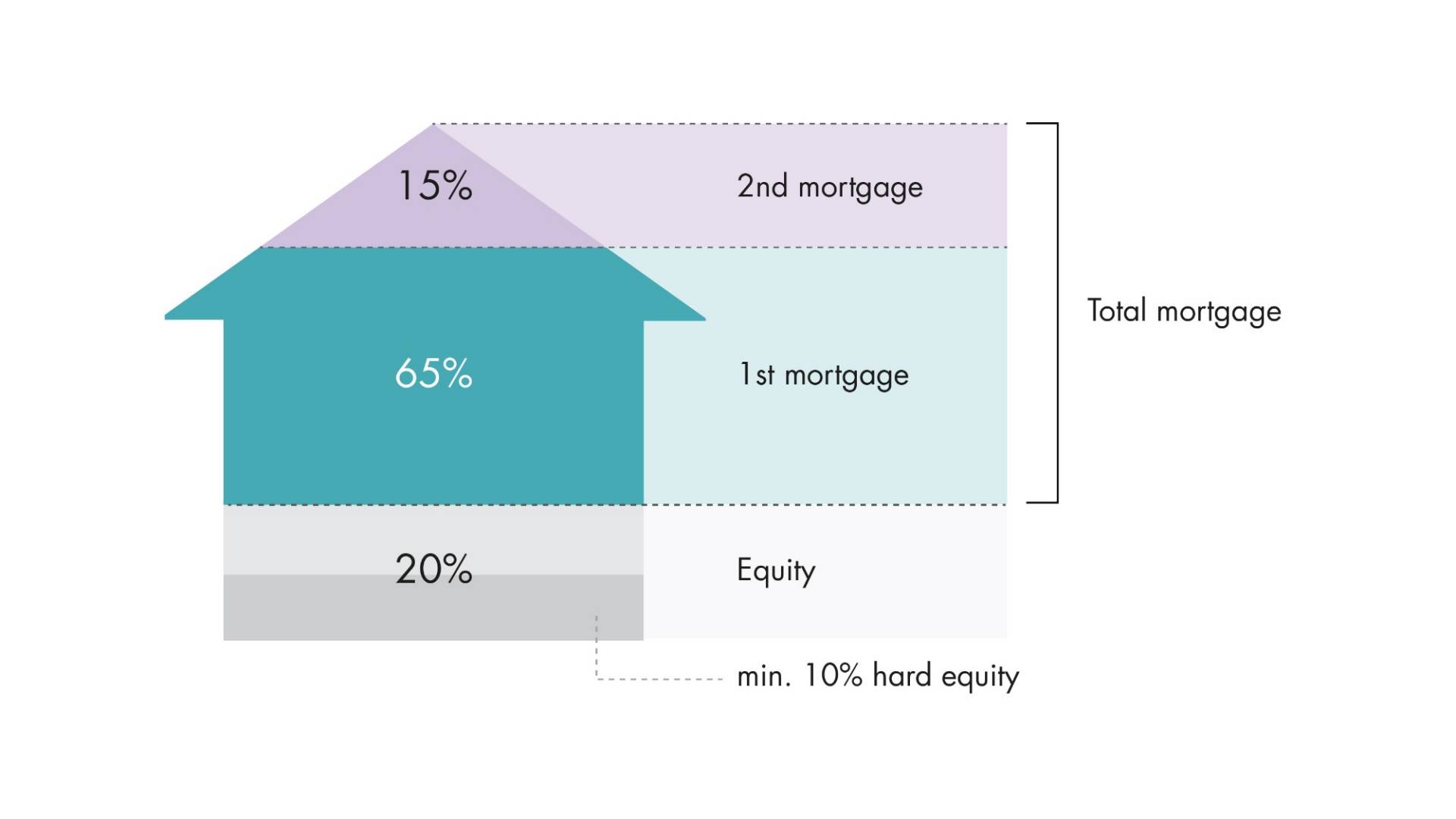
What does the lending ratio or lending level mean?
The loan to value ratio (LTV) designates the externally financed portion (mortgage) in relation to the purchase price. LTV is typically given as a percentage, with the maximum lending ratio generally being 80%. Or to put it another way: assuming affordability is confirmed, up to 80% (in exceptional cases up to 90%) of the purchase price can be financed with a mortgage. So conversely, this means at least 20% of the purchase price must be provided as equity.
Example:
The purchase price for a property is CHF 1 million. The buyers provide CHF 200,000 as equity and take out a mortgage for CHF 800,000. So at the time of purchase, LTV is 80% (CHF 800,000 / CHF 1,000,000 x 100). If customers opt for direct amortisation, with the mortgage reducing year-on-year, the LTV also reduces year-on-year. As the market value of a property changes over the years, owners may ask the lender for a new assessment after a few years. If the market value has increased, the LTV reduces along with the amortisation obligation.
What does affordability mean and how is it calculated?
Lenders need to know whether their customers can afford the ongoing costs for their home. So they pay close attention to affordability. This is taken to mean the borrowers’ household income in relation to the costs as calculated. These costs include interest, amortisation and both maintenance and ancillary costs. The latter includes, for example, insurance premiums, heating and electricity costs or reserves for future renovations. As a general rule, the costs calculated for the property should not exceed a third of household income. This includes all regular income, including the 13th month salary and any bonuses, although they are actually only partly counted (e.g. 50% of the average for the past 3 years).
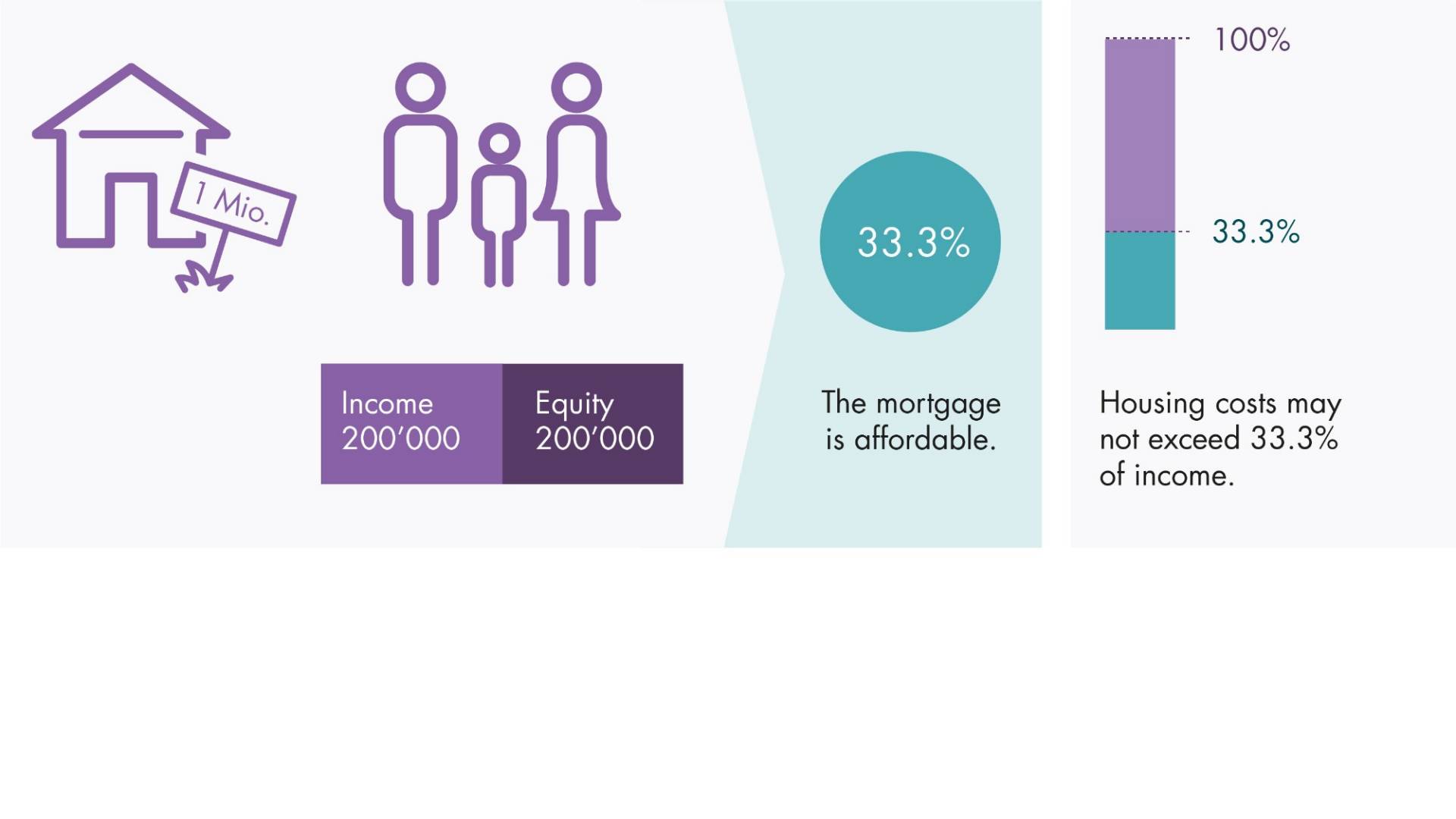
The so-called affordability calculation is used to work out the costs. It is worth pointing out that the ongoing mortgage costs are not calculated on the basis of current interest rates. Instead, the calculation is based on average interest rates over many years – generally of between 4.5% and 5%. This is ultimately intended to provide the borrowers with some security: it ensures they will not experience any payment difficulties, even at higher interest rates. Maintenance and ancillary costs tend to amount to around 0.5% to 1% of the purchase price. The lenders look at the age of the property when deciding on the specific percentage: the ancillary costs for new buildings will be lower than those for older buildings.
Calculate the affordability of the property you have chosen with our mortgage calculator.
Example:
The purchase price for a property is CHF 1 million The buyers provide CHF 200,000 as equity and take out a mortgage for CHF 800,000. CHF 650,000 falls under the 1st mortgage and CHF 150,000 falls under the 2nd mortgage, which must be fully amortised. The buyers’ household income that may be counted amounts to a total of CHF 200,000 a year. 1% is factored in for maintenance and ancillary costs, and the amortisation period for the 2nd mortgage amounts to 15 years.
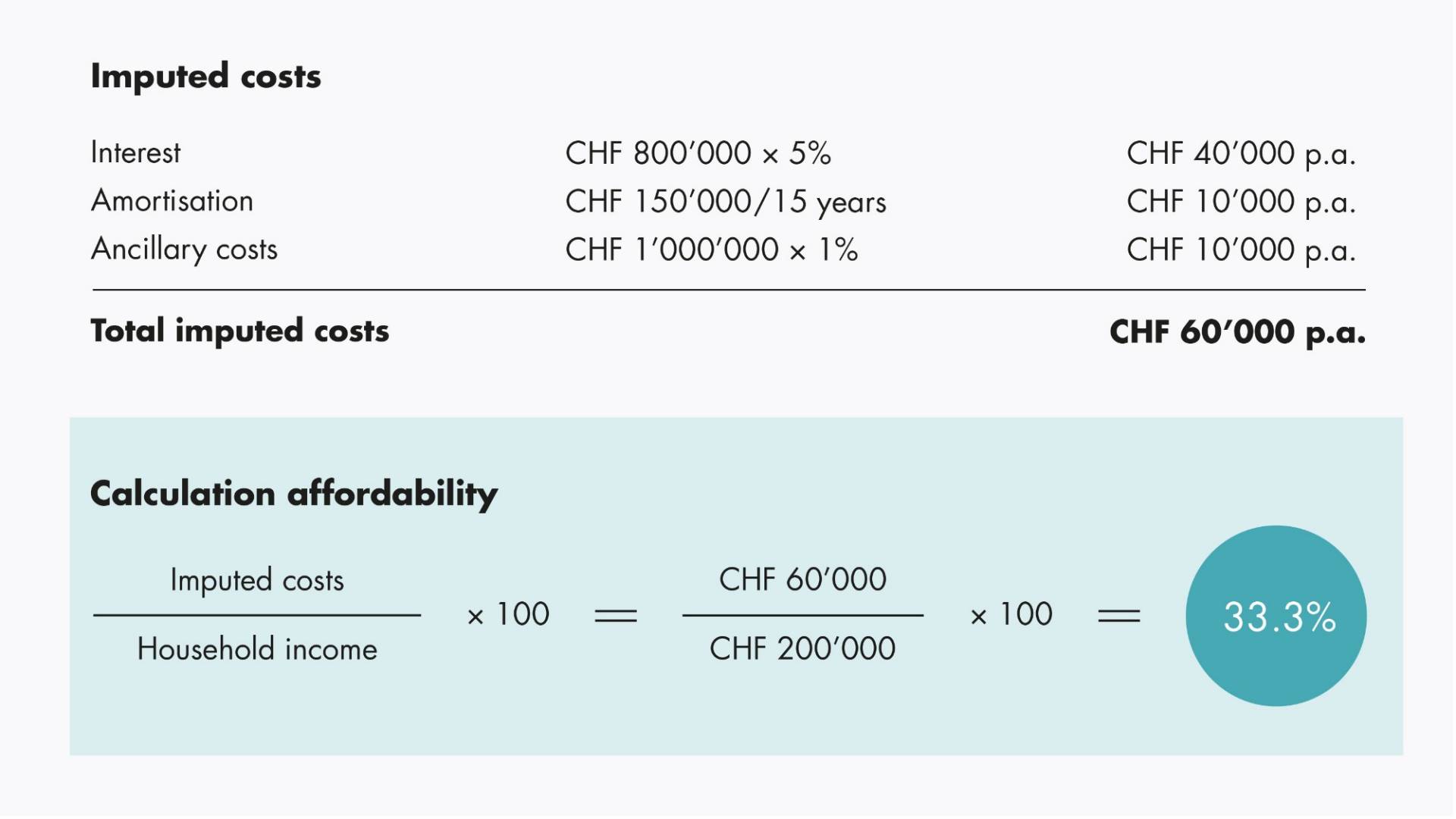
Affordability provisions often present a significant hurdle for those hoping to buy a home. Many providers have therefore amended their lending criteria accordingly. They also approve finance applications, as so-called exceptions, that do not completely meet the strict guidelines. This, however, is at the lender’s individual discretion.
What does amortisation mean?
Amortisation is another word for repayment of the mortgage. So amortisation means repaying the whole mortgage or part of it at regular intervals, with payment amounts remaining unchanged. In most cases, amortisation is annual or quarterly, depending on what has been agreed. Unlike the 1st mortgage, the 2nd mortgage is subject to an amortisation obligation: it needs to be amortised within 15 years or no later than the time you retire. If there are two borrowers, then the older applicant's age is used.
A distinction is made between direct and indirect amortisation.
Direct amortisation
With direct amortisation, you make regular repayments, as defined in advance, with the mortgage amount thereby reducing all the while. Thanks to the repayments, the annual interest liability also reduces automatically.
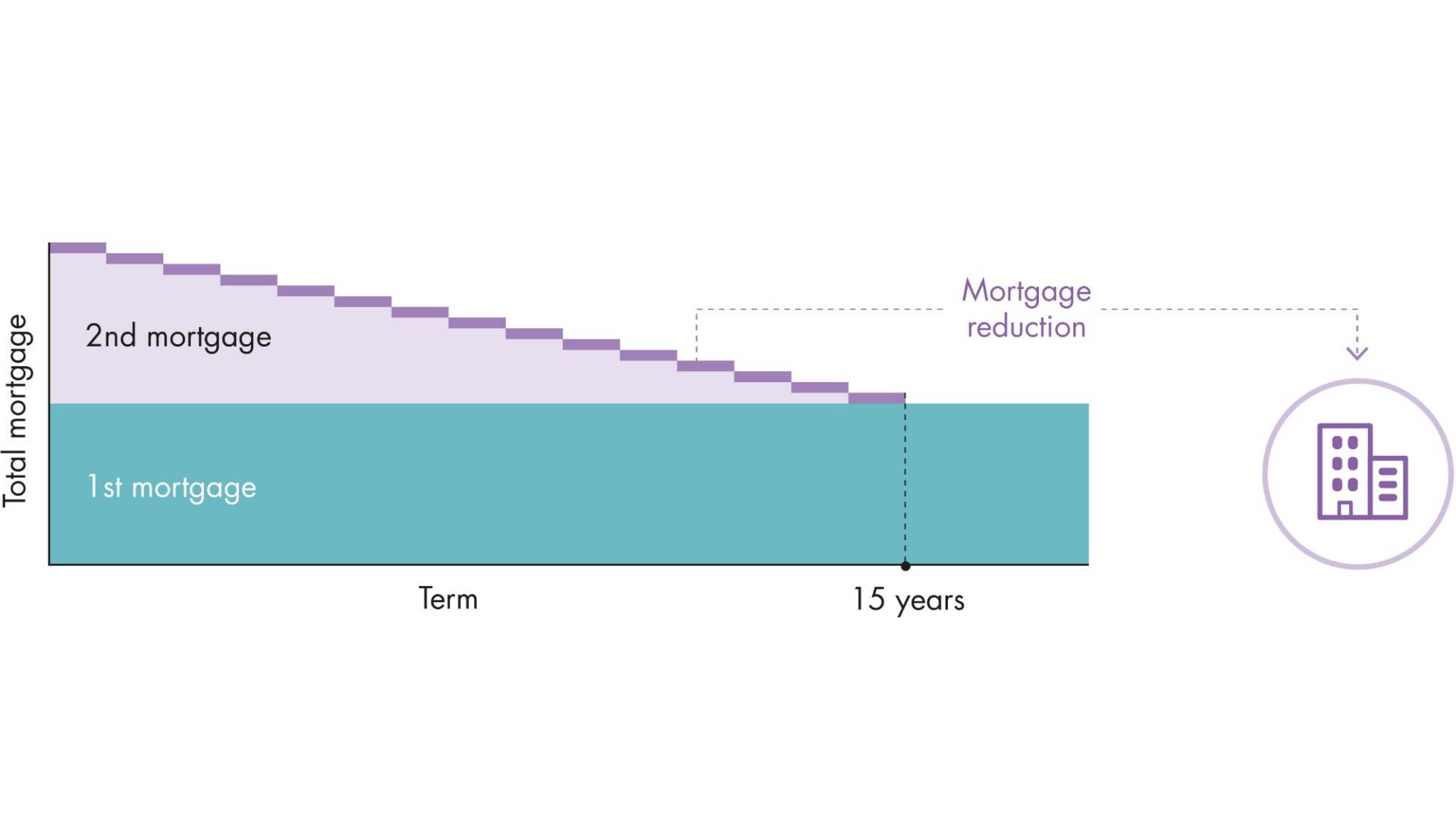
Indirect amortisation
With indirect amortisation, you make no direct repayment as such, but regularly pay the amortisation amount to a 3a pension product instead (account, pension policy). An aggregate repayment is then made at a later time (e.g. when a tranche is due), but no later than retirement. Indirect amortisation is attractive from a tax perspective:
- Tax-deductible payments for income tax purposes
- Loan amount remains unchanged as regards deductibility for wealth tax purposes
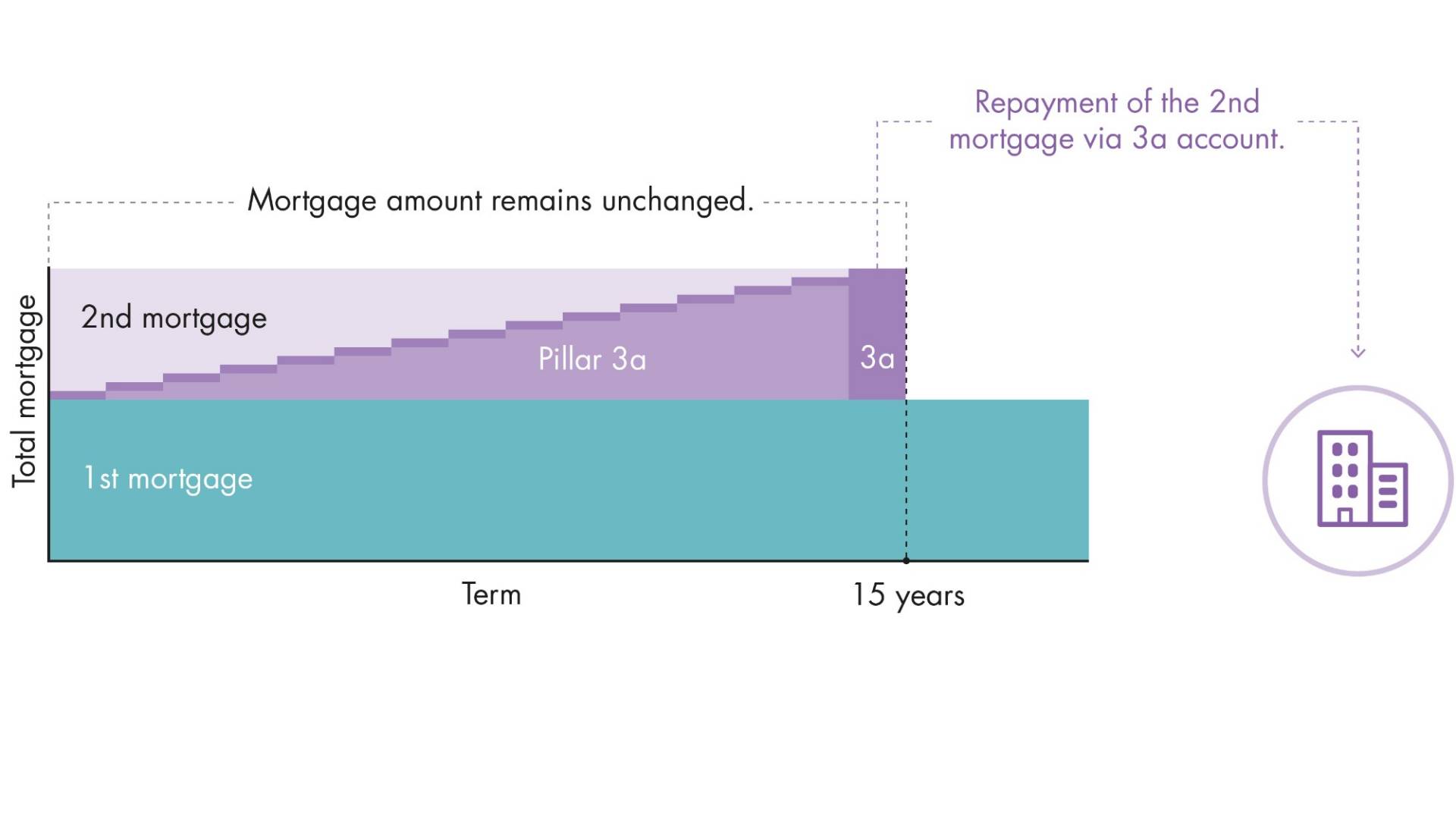
What overheads will I need to prepare for?
You need to consider the following costs:
- Interest costs for the mortgage
- Ancillary costs
- Maintenance
- Tax liabilities
How much you should factor in for overheads will depend on the property (age, build standard, etc.) and location. As a general rule, you should factor in at least 1% of the value of the property per year for maintenance and ancillary costs. Ancillary costs include things like electricity, water, heating costs and any savings for renovations. Because it makes sense to build up a savings pot for maintenance purposes, such as replacing the heating or for new windows. With commonhold properties, there are additional expenses for any communal areas. These include, for example, management costs or caretaker and gardening fees.
Any overall assessment of living costs should also consider the tax liability associated with the imputed rent value. In summary, the monthly outgoings when you buy a house can be broken down as follows: mortgage interest costs + maintenance and ancillary costs + tax liabilities. Amortisation also has to be factored into the budget, of course. But as amortisation involves paying off the mortgage, this does not count as an overhead.
Should I split my mortgage into several tranches?
In principle, a mortgage can always be split into tranches with different terms and interest rates. This only makes sense, however, if you wish – within the foreseeable future – to pay off a tranche that will fall due. If the due dates for the different tranches are 2 or more year parts, the current finance partner will basically be able to dictate the terms of a tranche falling due. This is because any switching of an individual tranche to a more attractive finance provider will not be possible or only at considerable expense. In addition to any splitting of the borrower’s note, the new finance provider must also expect to be treated as a secondary provider - a very unattractive prospect for any lender. We therefore recommend that any borrowing be structured as a single-tranche arrangement. This puts you in a stronger negotiating position when your loan falls due.
How do I finance a move?
Selling a property and immediately investing the proceeds in a new home: what sounds simple in theory is often complicated in practice. Many property owners are not able to buy their chosen property because the timings are off. A lot of the time, the majority of the assets are tied up in the current property at the same time as a deposit for the new property is due. Check out potential interim financing options. Have a read of our blog article to discover what you need to bear in mind.
Personal & digital. Comprehensive advice on your home.
Our experts at Helvetia and MoneyPark can advise you on all financial matters relating to the search for, purchase, ownership and sale of your own home. They also keep an eye on insurance and pensions.

